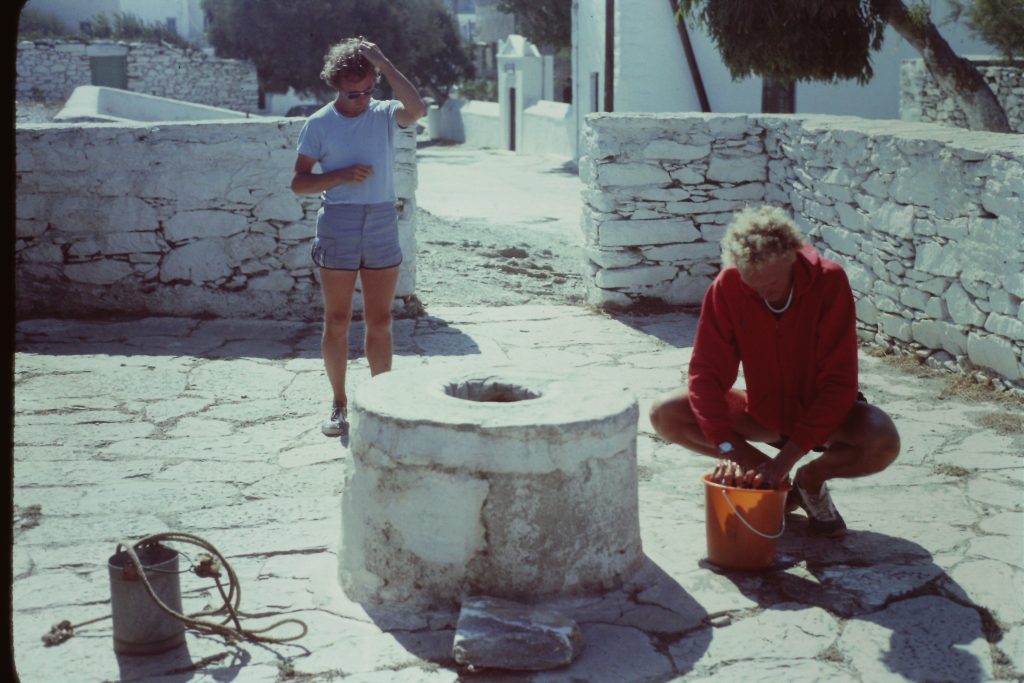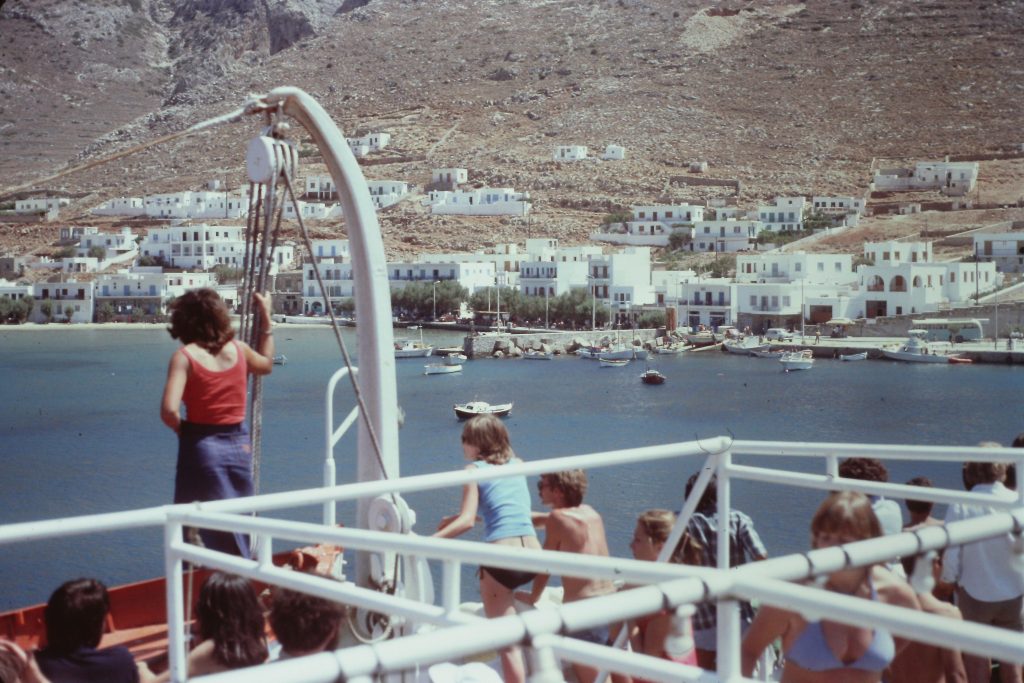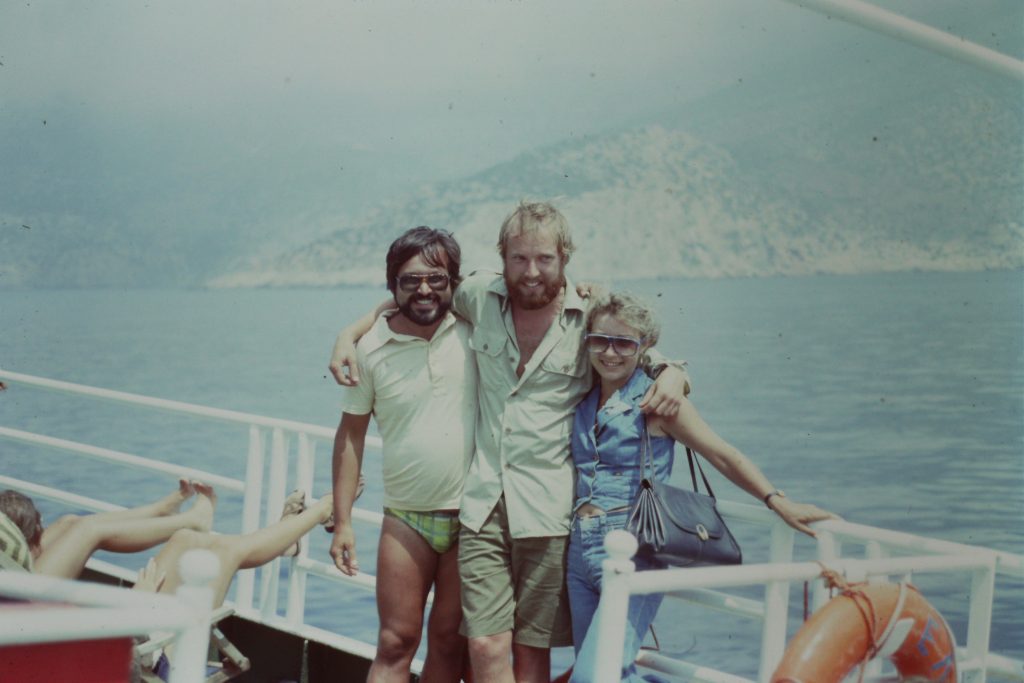Island-hopping! Even today, those words evoke a warm feeling inside of me. I remember so well how exciting and liberating it sounded – the combination of trains, inter-railing and the Greek islands in the 1970s. That’s when I, along with so many other eager young explorers, set out on my adventures.
In this Part 2 of my roamings, I will continue with a few more entries about the first trips I made to the country whose charm I have not been able to resist ever since. With the hope that the trips to Greece will become ever more frequent in the years to come..
1978. Road trip instead of island hopping
Stockholm – Germany – Belgium – France – Switzerland – Italy – Yugoslavia – Greece Halkidiki – Kavala – Thassos – Alexandroupolis – Istanbul – Bulgaria – Hungary – Austria – Germany.
In 1978 I had plans to make a longer trip as I had the possibility to be on vacation for 6 – 7 weeks in the summer. Together with three good friends we decided to attempt a road trip through Europe. Our vague goal was to get as far as Istanbul, if now the car would do the job. We had bought a Ford Transit for a good price and rebuilt it so that all four of us could sleep in it, if necessary.
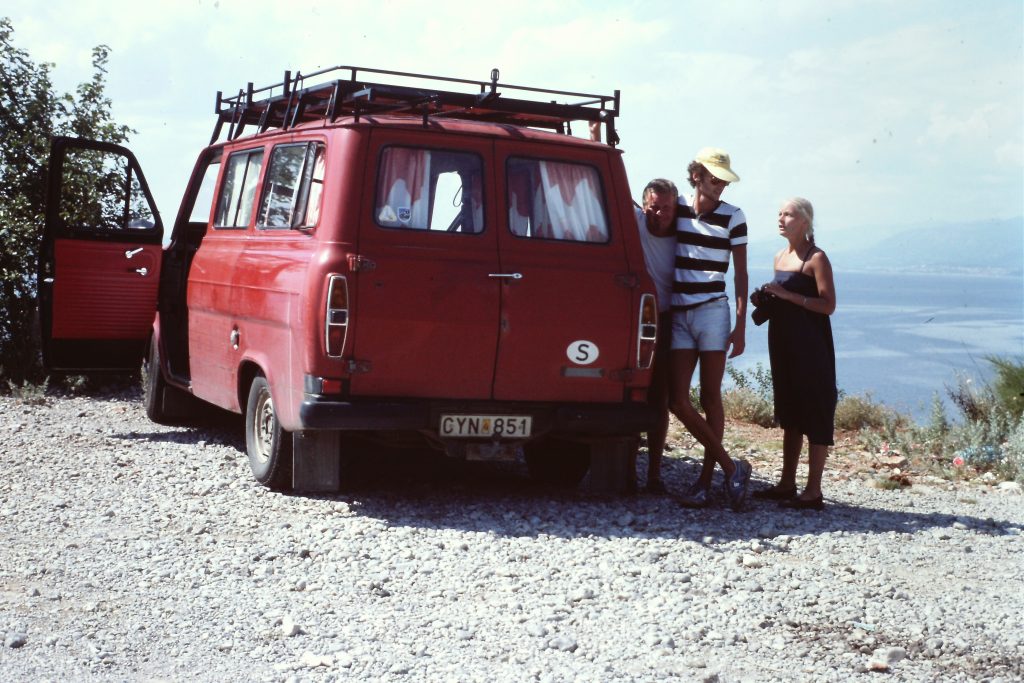
The basic idea was that we would drive on small roads as much as possible.
After the long journey through Germany, the Netherlands, Belgium, France, Switzerland, Italy and Yugoslavia, we finally crossed the Yugoslav – Greek border. By that time 4-5 weeks had already passed since we left Sweden and started our journey through Europe. Thus, Greece became just a part of our travel.
Are you planning to visit Greece in 2024?
Travelers across the globe use the Tripadvisor site to discover where to stay, what to do, and where to eat based on guidance from those who have been there before. With more than one billion reviews and opinions of nearly eight million businesses, travelers turn to Tripadvisor to find deals on accommodations, book experiences, reserve tables at delicious restaurants, and discover great places nearby. Discover Greece here >>
NOTE! By shopping through our links, you are supporting us financially, at no extra cost for you, so that Expedition Greece can continue to deliver quality content. More about sponsored links in our privacy policy.
We really appreciate your contribution – it makes a difference!
Kavala – Thasos – Chalkidiki
When we arrived in Greece, we realized that the time would not be enough for a visit to Istanbul if we lingered in the country. That meant that there was not much time for Greece this time. I had already been quite short in Thessaloniki a couple of times in previous years, and unfortunately also this time the visit there became short. However, we managed to see parts of Halkidiki (Kassandra and Sithonia), as well as charming Kavala.
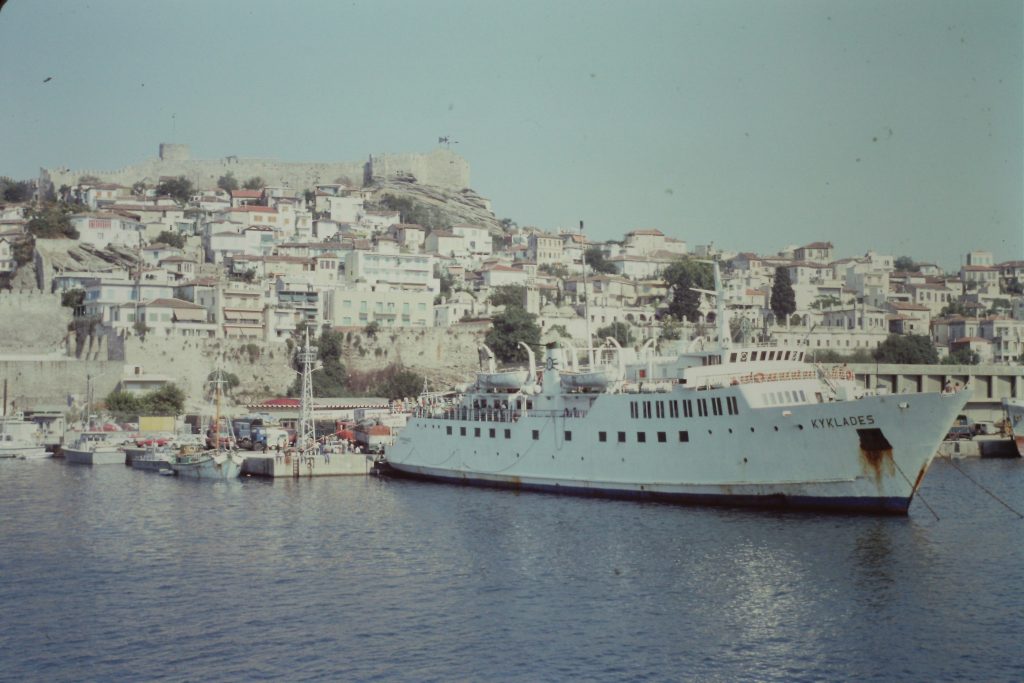
We also stayed a few days on Thasos, a nice island that was still almost completely unexploited. On Thasos we found entirely untouched nature and empty beaches and we were able to gather some peace and calm that we thought would be needed in Istanbul. I also remember a stop for lunch in the town of Alexandroupolis, before it was time to head towards Mikligarðr / Constantinople / Istanbul. But that is a completely different story.
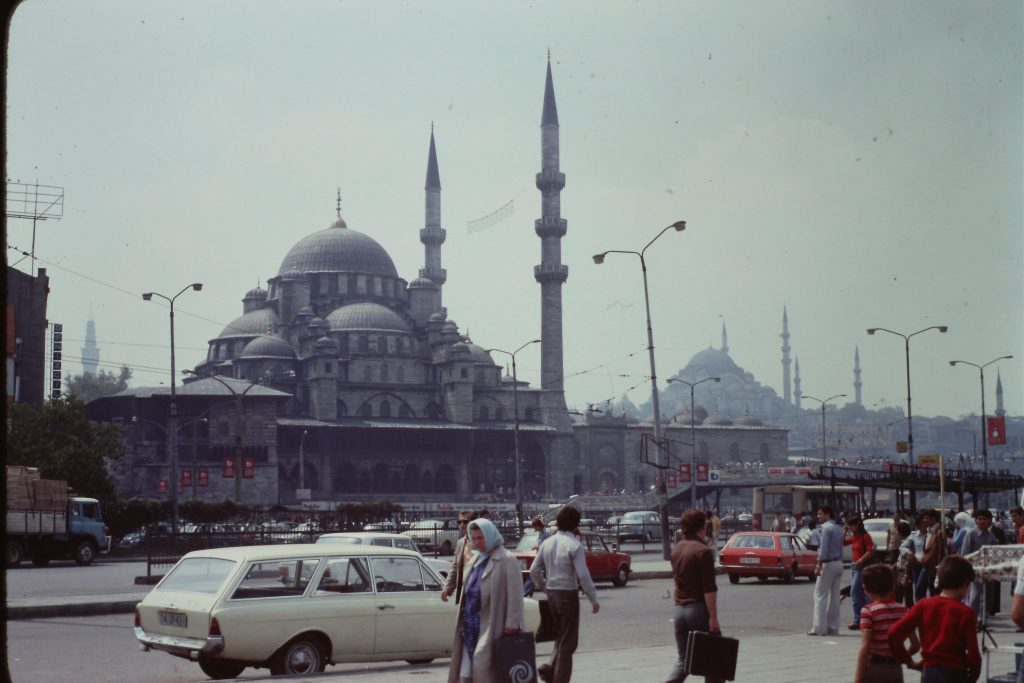
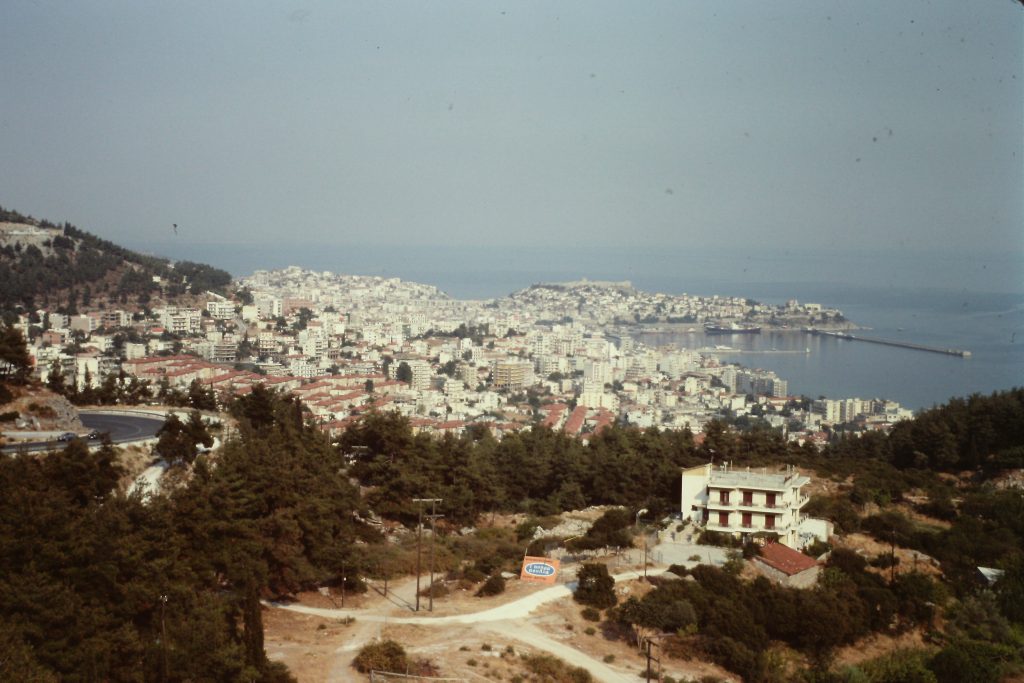
From Istanbul we drove home through Bulgaria, Yugoslavia, Hungary, Austria, Germany and Denmark. We had traveled about 8,500 miles, and the car was still working! Much thanks to small local auto-repair shops, some oil, a few kicks, some more oil and a lot of love.
🚗 Rent a car without hassle, all year round, to any destination with RentalCars.com >>
1979. A return to Greece – first visit to Amorgos
Stockholm – Copenhagen – Hamburg – Munich – Athens – Amorgos – Sifnos – Athens – Amsterdam
In the summer of 1979 it was time for island-hopping in Greece again. It would be my fourth time visiting the country. After the long road trip in 1978, I felt that it would be perfect with another train and interrail trip, my fourth and probably last. (It may of course happen that we will dust off our backpacks and hit the rails of Europe again, a thought which has become increasingly tempting in recent years).
It started with music recordings
Already in 1977, I had decided to visit lesser known Greek islands on my next trip. During those years, I was working on an essay for my university class in musicology, together with a group of other students. A large part of our work involved recording the music of various immigrant groups in Stockholm. It was a truly enjoyable job that allowed us to discover a plethora of good and exciting music. Several of the bands we recorded were Greek and it was through them that I got the valuable tips about Amorgos and Sifnos.
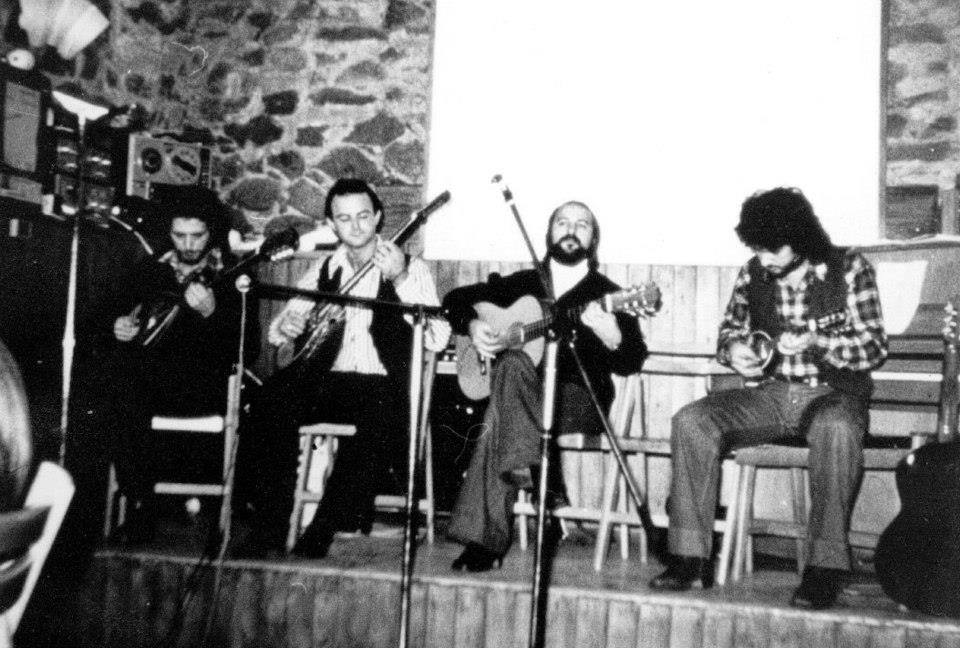
Amorgos – love at first sight
Well, it may not have been the very first sight, because the arrival at the port of Katapola took place in the middle of the night, after perhaps 12 – 13 hours trip on the worn ferry Agios Georgios. Most ferries that went to the smaller islands often had difficult arrival times, as I remember. It was pitch black night when we stepped ashore, so we didn’t see much of the island.
At the pier, me and many other people spontaneously ended up on a very old bus. It was a 1957 Dodge, as one of the passengers said. In this late hour, without thinking too much, I decided that I would go to Chora, the main village, which was about 20 – 25 minutes up in the mountains (today the same trip takes maybe 10 minutes).
Chora and Katapola
The bus stopped, around four in the morning, in front of the cafe/tavern To Kastro. It was a place that later on would mean a lot to me, but at the time I didn’t know that. The next challenge was to find somewhere to sleep. I had traveled with Terje, a Norwegian guy I had met on the train, and we quickly decided to follow a local woman, Maria, who offered rooms to rent. So before we really knew what had happened, in just a few minutes, we had a roof over our heads, right in the very heart of Chora.
I still remember waking up in this amazing village, as beautiful as the pictures on all the postcards you’ve seen from Greece. Whitewashed houses, narrow alleys, donkeys and friendly people. It immediately became clear that I had found the right place. For sure, Ios was beautiful, as was Corfu, but Chora on Amorgos was even more outstanding! I immediately had an overwhelming feeling of being at home!
This first time I stayed almost three weeks in Chora, but changed accommodation a couple of times. When Terje went back home, I shared a room with Jesper, a nice Dane, and Phil, an Australian (as well as with an unnamed mouse that happily ate of our bread).
We tourists, or travelers as many chose to call themselves, quickly got into the village life. In those days there were not too many taverns or cafes, let alone bars, so you often ended up in the same place as everyone else. The social hub of the village was the cafe/tavern To Kastro, which was located where the bus from Katapola had its final stop. Here we slowly but surely got to know people. I often had the opportunity to chat with Parvas and his family, who ran the tavern.
Your ultimate companions for adventures in Greece
With the right travel guide, you’ll discover Greece like an insider. Find invaluable tips based on your interests and travel style. Many guides also offer maps, cultural insights and practical facts. Choose and buy easily here:

The Greek Expedition is part of Amazon Associates Program
Swimming in the Big Blue
During the days, we spent most of our time swimming. There were several options to choose from. The closest, just below Chora, was Agia Anna, a beautiful rocky shore where parts of the movie The Big Blue were filmed. Other times we took the old bus to the harbour village of Katapola, and from there boarded a small boat out to the rocks, where you could swim naked if you wanted to – although some times the police disagreed with us about the latter. Occasionally, we would hike down to Katapola, which was a unique experience, especially if you chose to follow the donkey trail, although such walk took its own time.
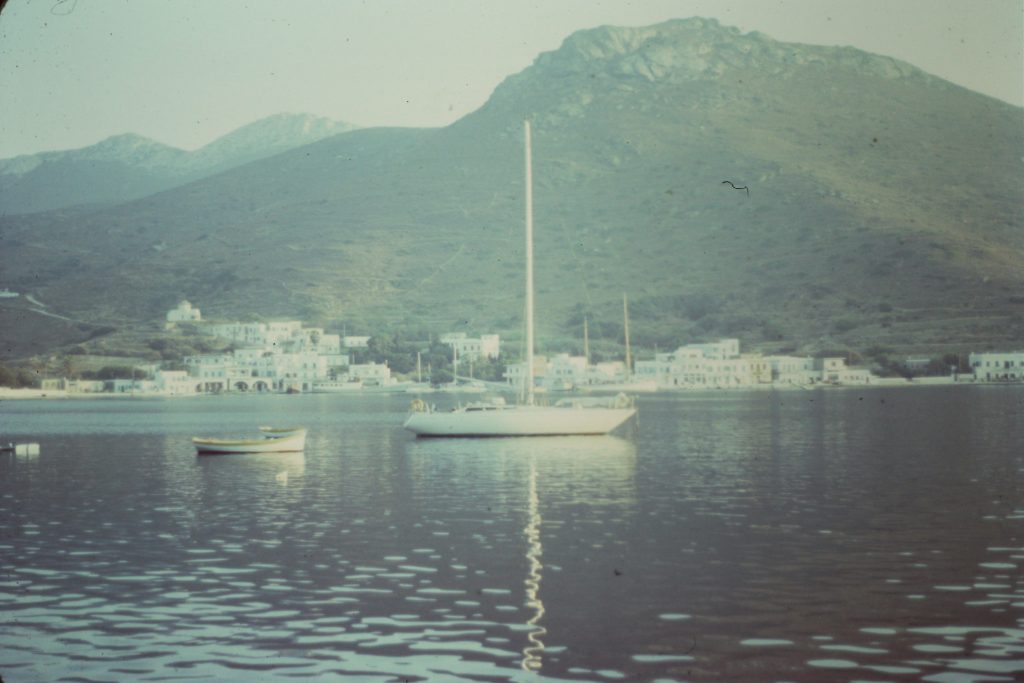
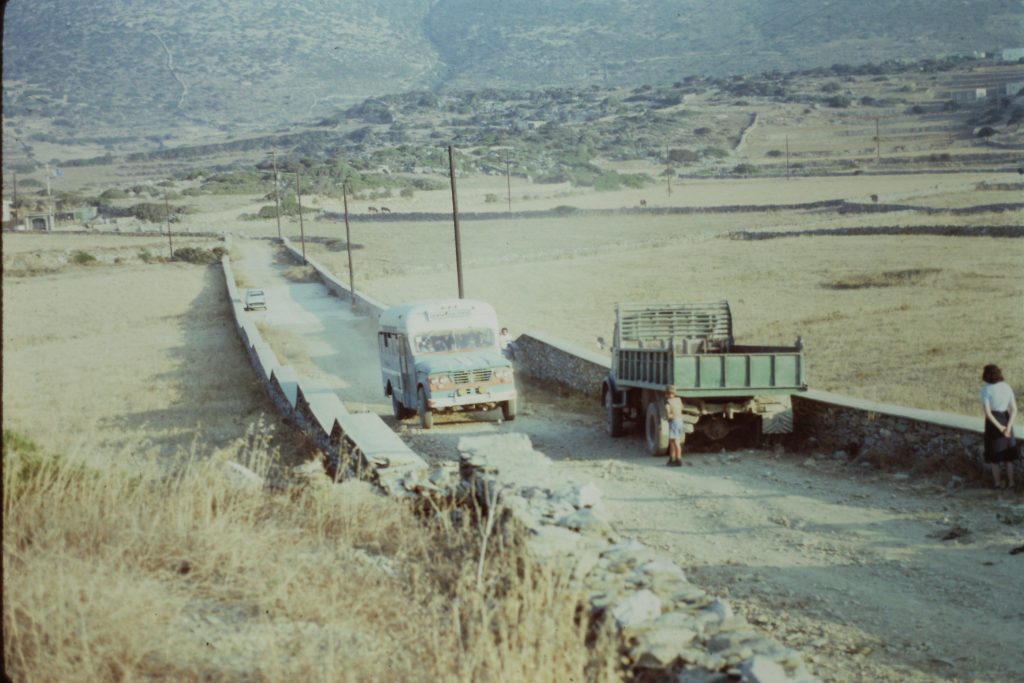
After the wonderful dives and swims we enjoyed during the day, many of us would gather at the central square of Katapola. There you could sit down in one of the three cafés: To Kamari, The Pirate or Nikoletta’s, in order to get some food and drinks. The whole square looked different back then, still unaffected by the hotels later built, or the sun-shields and ceilings the cafés were covered with the years to come. It was an open and simple meeting place.
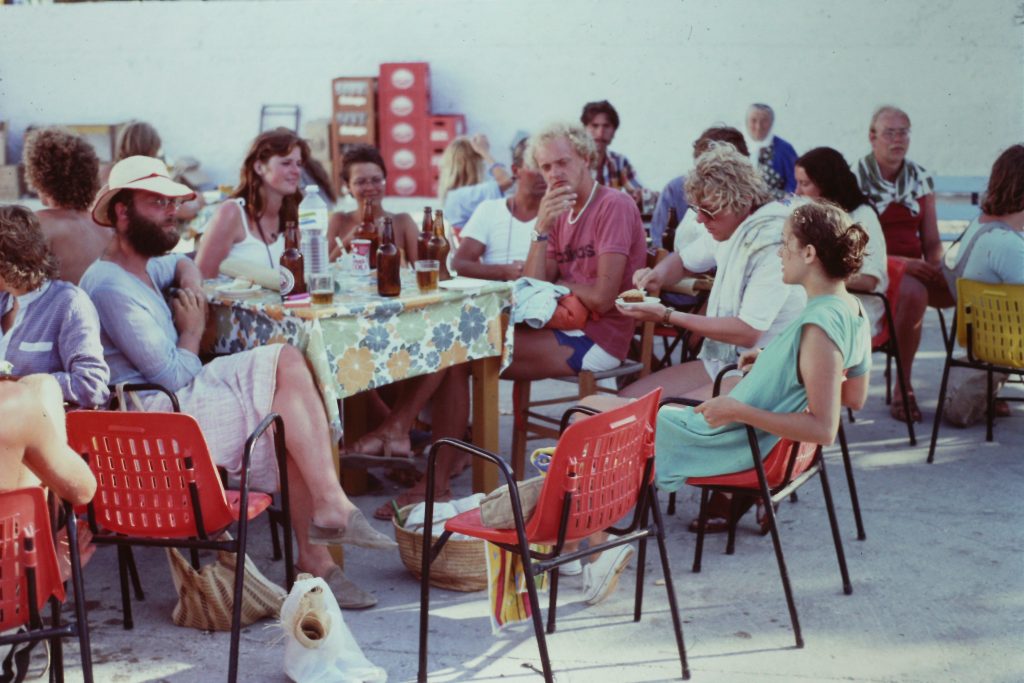
To Kamari, is today run by Michalis, son of Georgios and Evangelia, the couple who started the tavern/café at that time. Maria, the daughter of the family, became an important person for us tourists as she spoke good English and could act as an interpreter. To Kamari still feels to me like the center of Katapola, although today they no longer serve so much prepared food, apart for some good pies and pastries. We loved to sit outside those taverns / cafes after swimming in the azure sea and sunbathing on the flat rocks.
Most of the time the bus driver honked the horn at us Chora-residents that it was time to go up the mountain. But even driver-Vangelis sometimes needed to rest and then we had to go with a truck. We sat on the back of the truck, on wooden benches. A canopy was also set up as protection from the sun and wind.
Already after a couple of days I knew that Amorgos was the place I had been looking for. In that time, you didn’t meet many tourists there, neither in Chora nor Katapola.
Aegiali
It took me a while to realize that there was another very nice part of the island, Aegiali/Αιγιάλη. This first year, however, I didn’t make it all the way there.
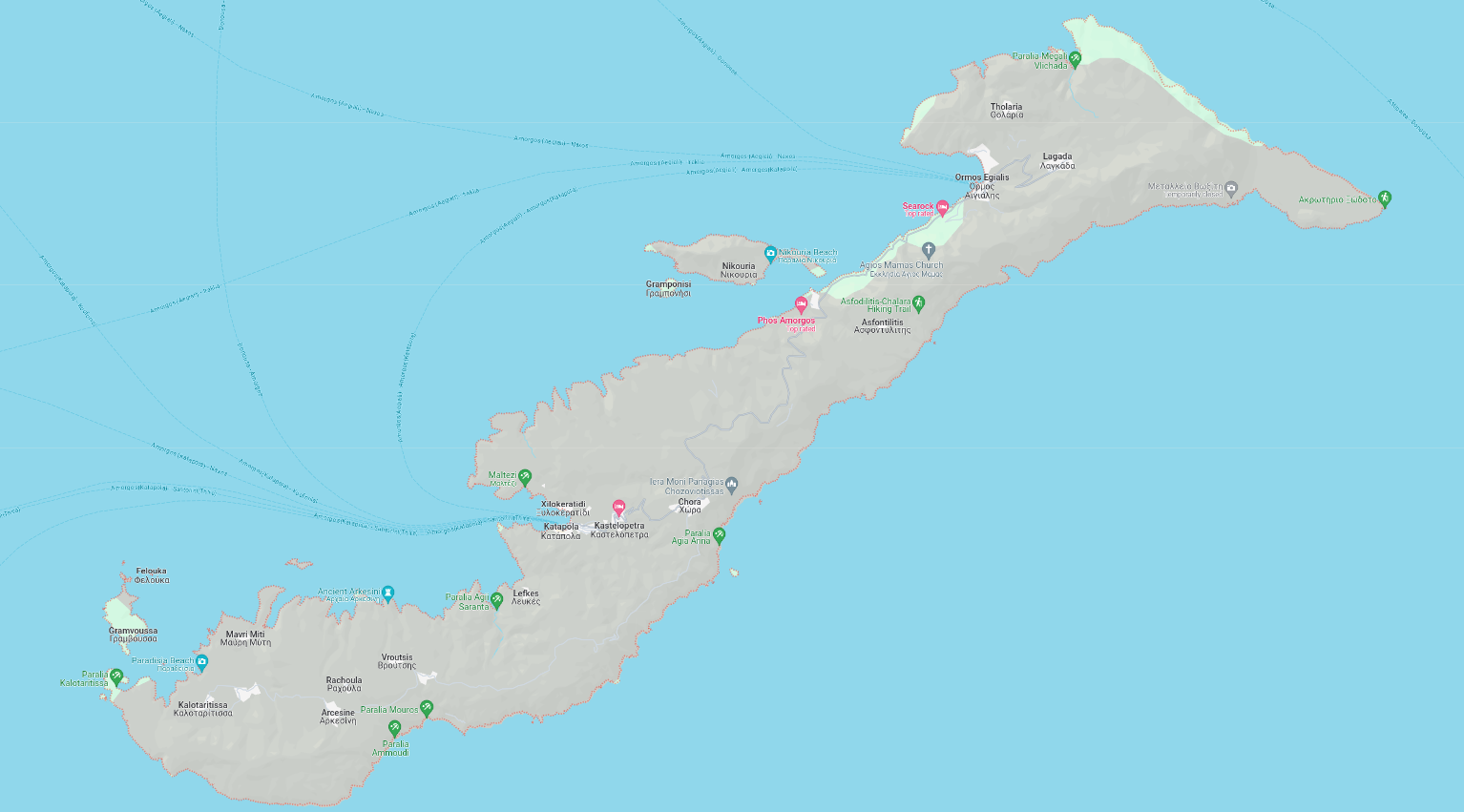
At that time, there were no car roads, so you had to take a ferry between the two ports of the island, or walk for about 4-5 hours on ridge trails over the mountains. At the end of the 1970s, the ferry Marianna was the lifeline between the small Cycladic islands and Naxos (Marianna was a Norwegian fjord boat that originally was called Vaeröy). The owner and captain of the ship was the later legendary Skopelitis, who was also a very talented violinist.
The larger ferries served both Katapola and Aegiali, but in the 1970s the latter port could not harbour the ships in the small quay. Instead, the passengers had to jump or climb from the ferry down to the small boats, latzes/λάντζες, which transported the passengers ashore. Quite a nasty experience sometimes, especially in strong winds. More about Aegiali in the next episode of my Greek roamings (part 3).
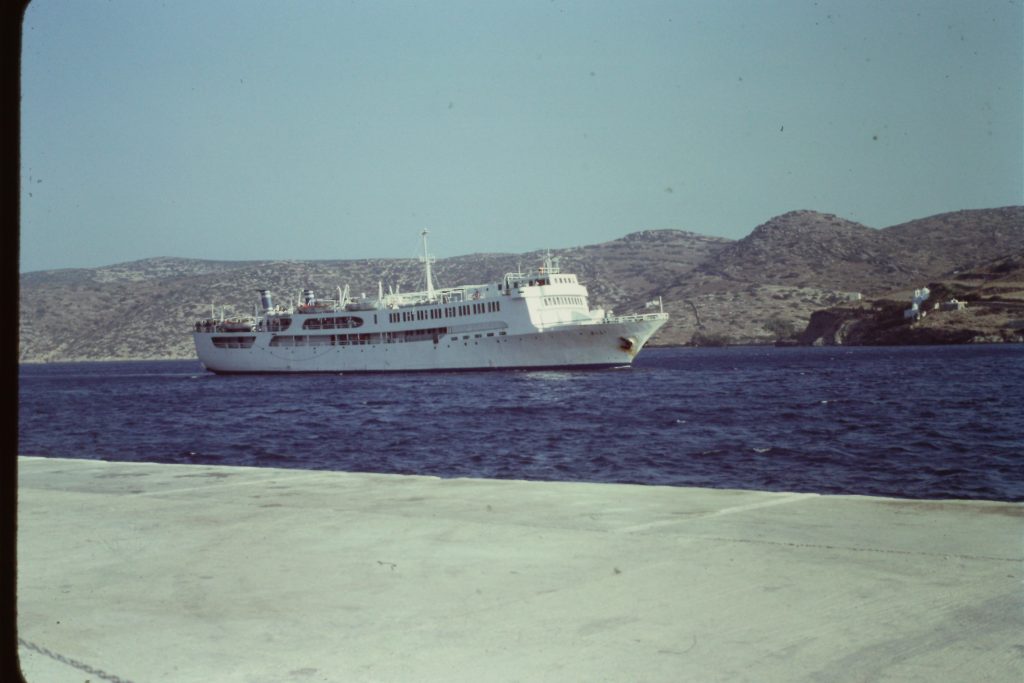
Although I had already fallen in love with the country of Greece, I now also fell in love with the island of Amorgos. I knew I would return. And with a little hindsight, I can say that there have been over thirty revisits since then.
🏘️ Book your next Greek accommodation now, easily and conveniently at Booking.com >>
1979. Sifnos

I had promised myself to visit two islands this summer. Again, I traveled alone, but when I remember those trips I think that I was never really alone. I met people constantly throughout my journey – some completely new acquaintances, or some already familiar faces encountered along the way. I now had only 10 days left to explore a new island before my train would depart heading North. I also wanted to stay a few days in Athens, my favorite city. Several people I met on Amorgos praised Sifnos as a fantastic island. So it became my next stop on this – my fourth – Greek odyssey.
I came to Sifnos directly after Amorgos in August 1979 and was quite heartbroken about having to leave my newfound love behind. But Sifnos turned out to be a wonderful balm for my heartache, even if the encounter with this island was not as strong as the one with Amorgos. From the northwestern port of Kamares, I took a very old bus straight to the mountain village of Kastro, via the slightly larger settlement of Apolonia.
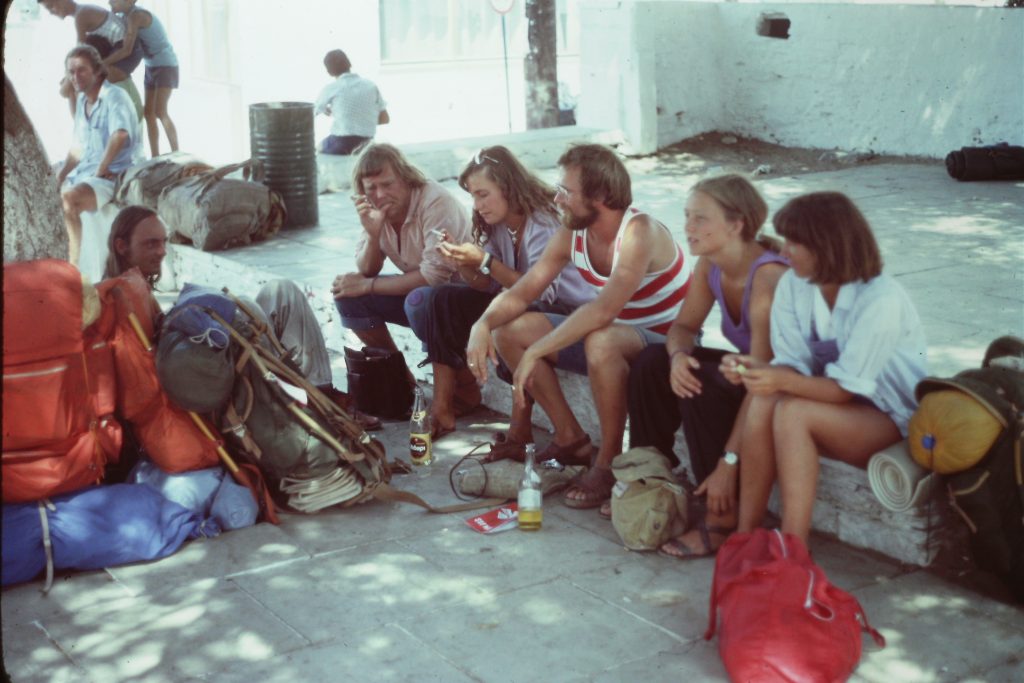
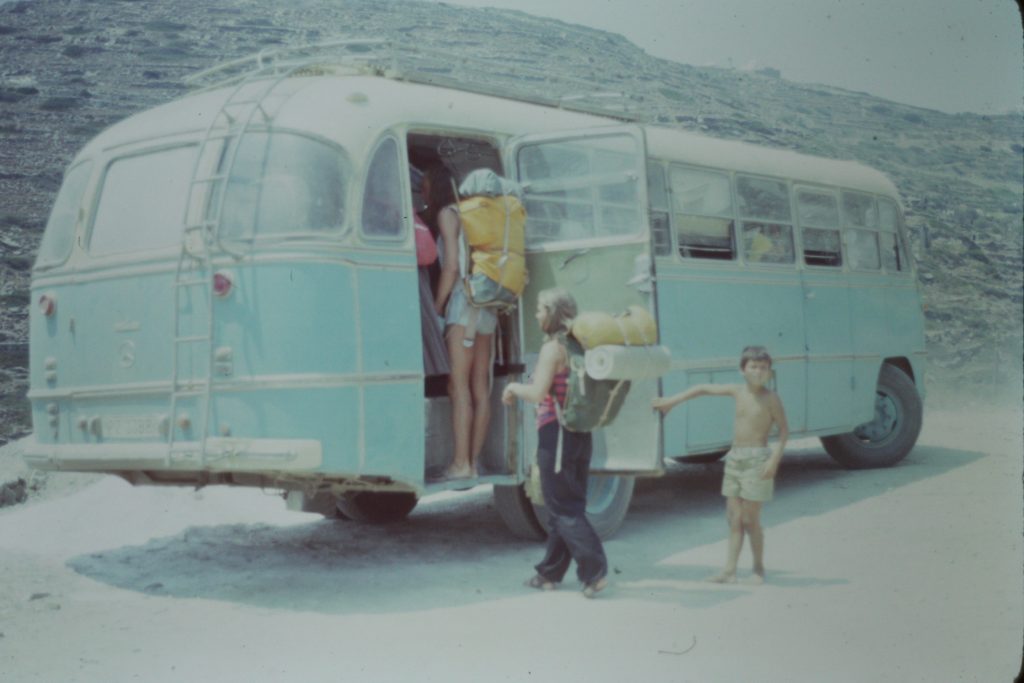
The village of Kastro had been described to me as very picturesque and beautiful and it really was! A fantastic place with only two minor disadvantages – there was a lack of accommodations offered and no real restaurant to find. But we quickly discovered a small small grocery store / παντοπωλείον, which sometimes served simple dishes in its beautiful garden. In addition, there was a small taverna at the tiny beach, just below Kastro. Simple food was often offered there, although it could take an awfully long time to get any order in.
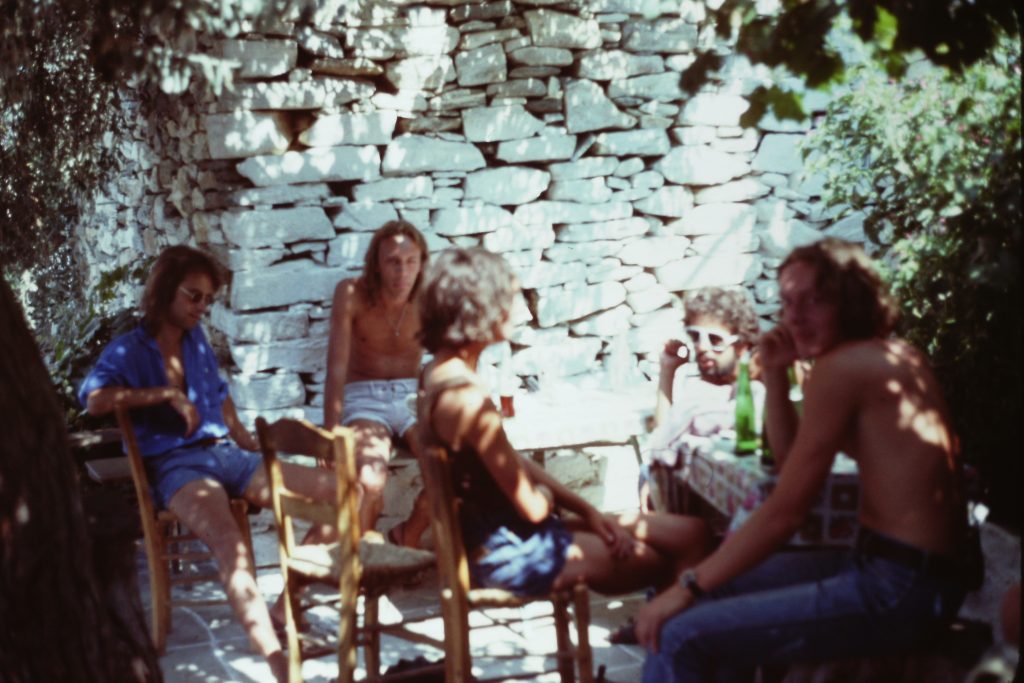
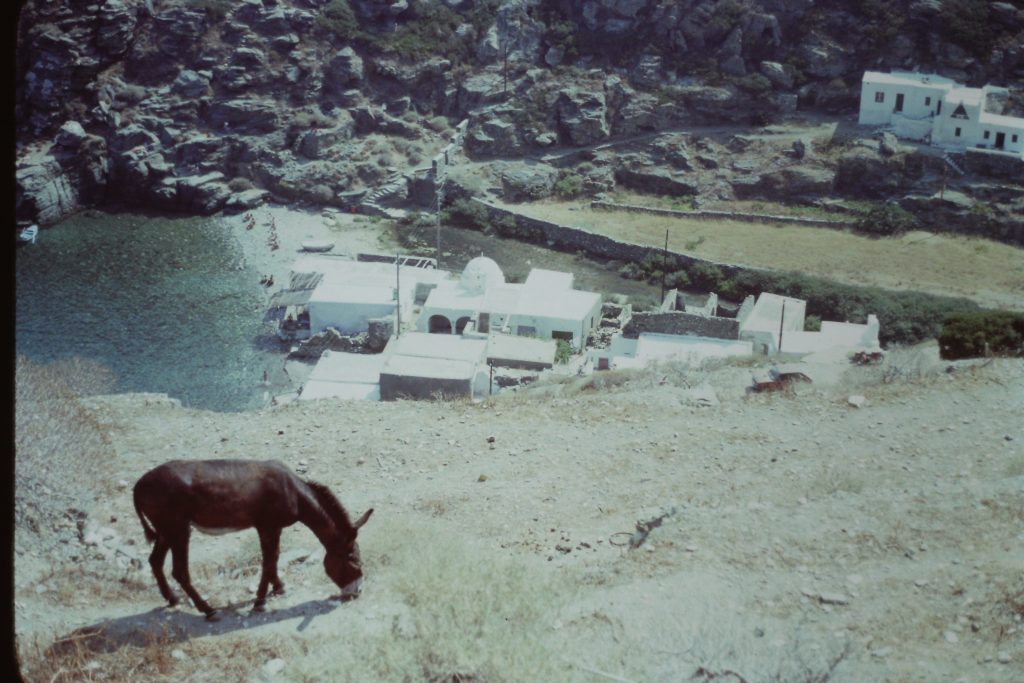
One evening I ordered potatoes and meatballs. The tasty potatoes arrived after maybe only 20 – 30 minutes, while the meatballs took so long that I forgot about them (perhaps because of the delicious retsina that you had to serve yourself). But when the meatballs finally did arrive, after almost 2 – 3 hours waiting, they were tasty, carefully seasoned and prepared with love.
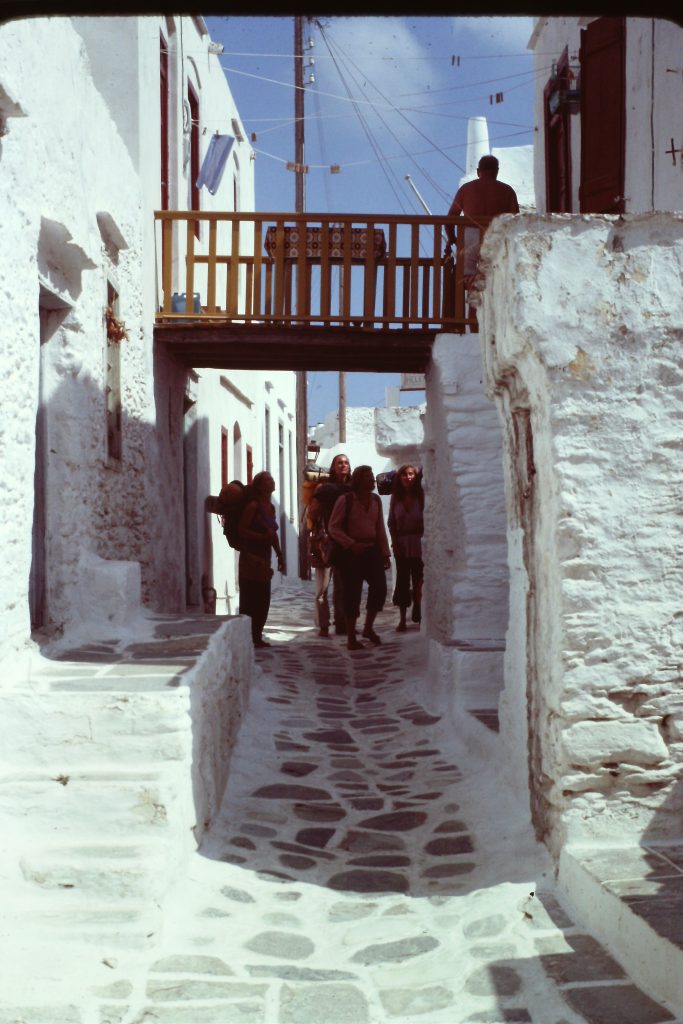

During the 5 – 6 days I spent on Sifnos, I stayed most of the time in this small village of Kastro, with a minor break for a bank visit in Apolonia. I had managed to find a kind of basement abode to live in, which I shared with a Norwegian couple. A simple and discreet retreat but with a magnificent view. In the east you could even see the island of Antiparos, when it was not too hazy.
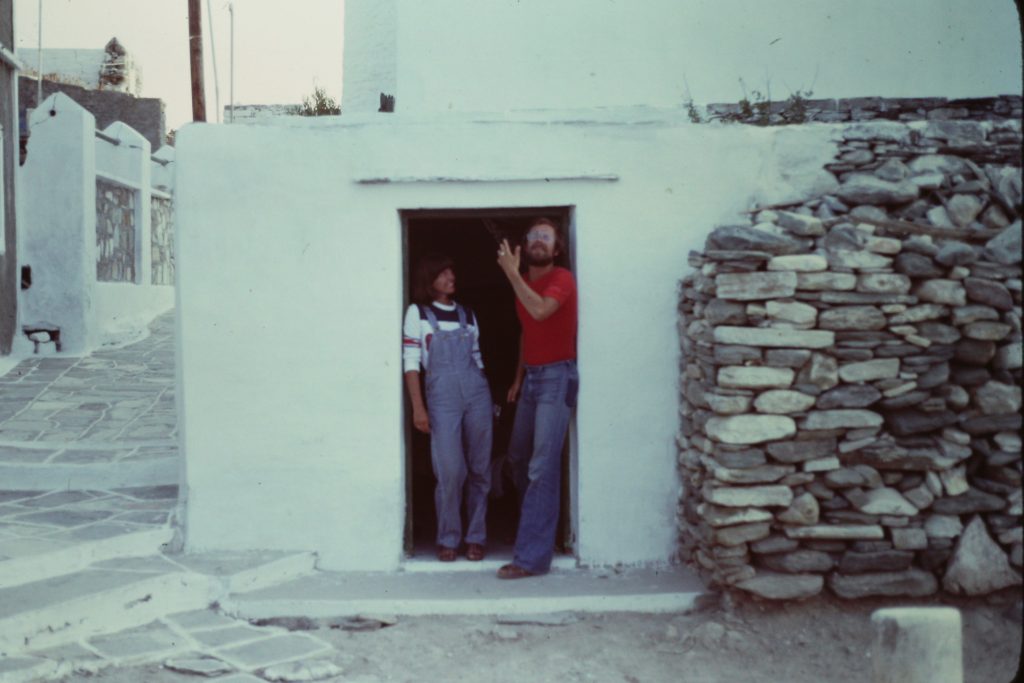
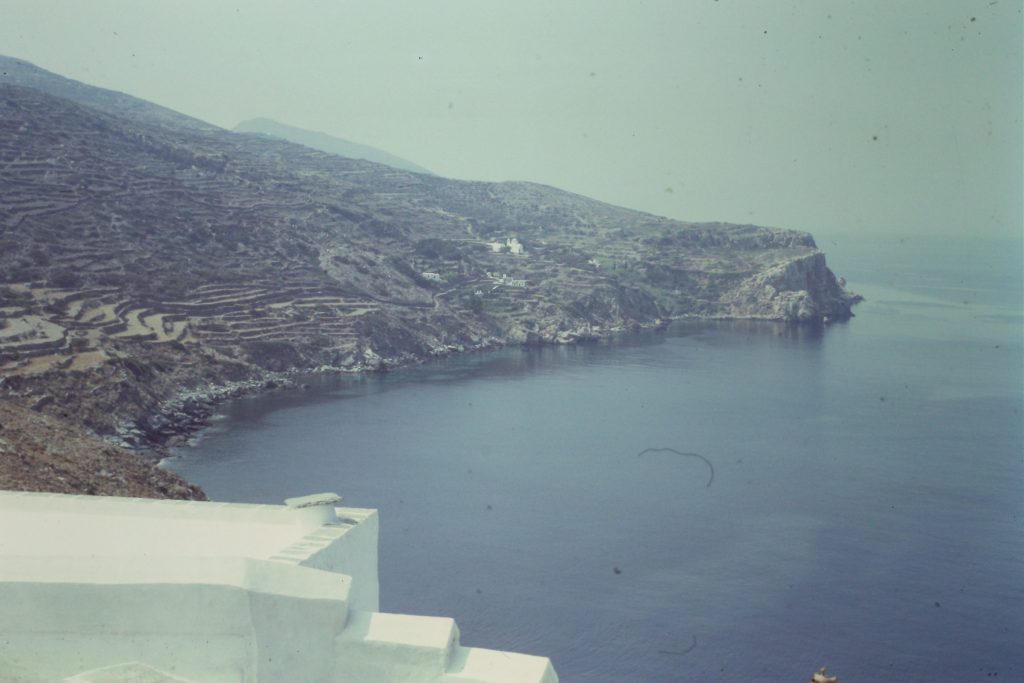
Kastro was truly a gem, where the villagers seemed to have little interest in exploiting their community for the sake of tourism. On my visit in the summer of 1979 there were perhaps 10-15 tourists, mostly from Norway, and we all enjoyed the local society. I was lucky enough to be there on August 15th, when the Virgin Mary’s Ascension Day is celebrated, and had the chance to experience the beautiful ceremony and feast/πανηγύρι in the whitewashed alleys of the village.
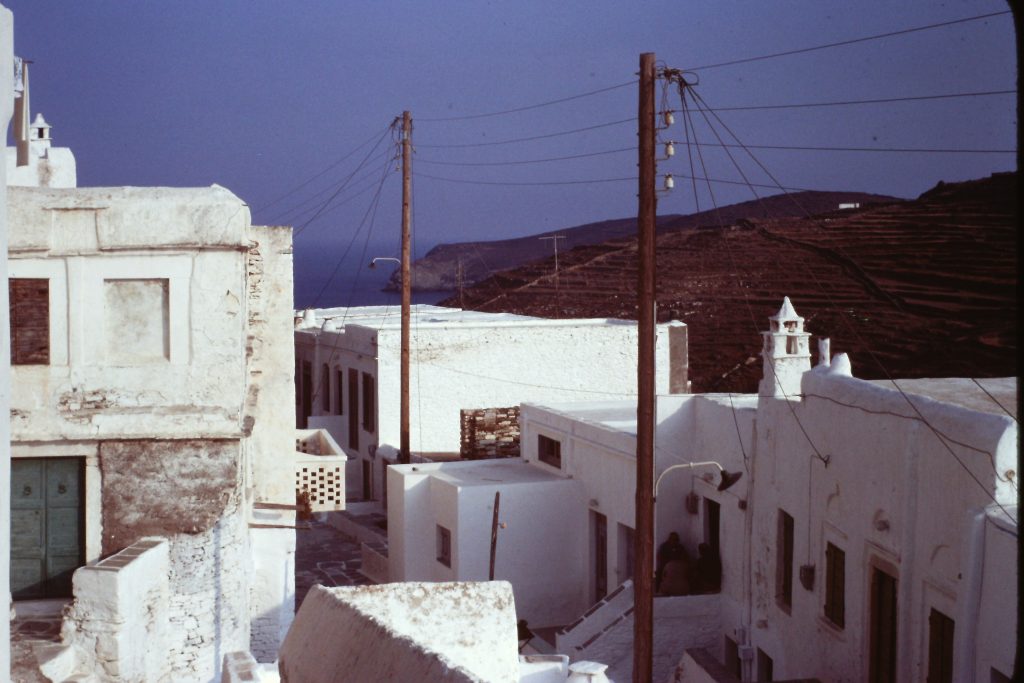
I promised myself that I would return to explore Sifnos more thoroughly, which I did many years later. I visited the island with my wife and children, and that time we became very fond of another village, Faros, on the south-eastern side of the island, where we stayed for a week. With Faros as a base, we got the chance to explore larger parts of the whole beautiful island.
Last year, 2023, we came back to Sifnos again. This time we only stayed three nights in the arrival port of Kamares. But we had time for a wonderful hike over the mountains between Apolonia and Kamares.
Sifnos definitely has an obvious place on our list of favorites in Greece.
Following in Ulf’s footsteps, a new generation of travelers today is experiencing the same adventurous sense of freedom on trains across Europe. And by taking the train, you not only get to your destination worry-free, you actively contribute to climate change by choosing the most sustainable mode of transportation. Easily plan and book your train journey on Trainline for a memorable and climate-smart adventure! Book your trip now på Trainline >>
NOTE! By shopping through our links, you are supporting us financially, at no extra cost for you, so that Expedition Greece can continue to deliver quality content. More about sponsored links in our privacy policy.
We really appreciate your contribution – it makes a difference!
The 1980s begins
The trip of 1979 brought an end to the era of traveling by train or car. Interrail had become a lifestyle where the journey was as much a part of the destination as the actual destination of the trip. In the early 1980s, however, I felt too old for Interrail. I also wanted to stay a little longer in Greece than the 3 weeks I managed in the previous years, as the train journey itself took about a week in total.
In the forthcoming chapters of my wanderings, cheap flights will play the main role in how I travel. But it is during those coming years that my love for Greece and especially for the island of Amorgos really deepens.
The 1980s was the decade when I began to get to know Greece more in depth.




